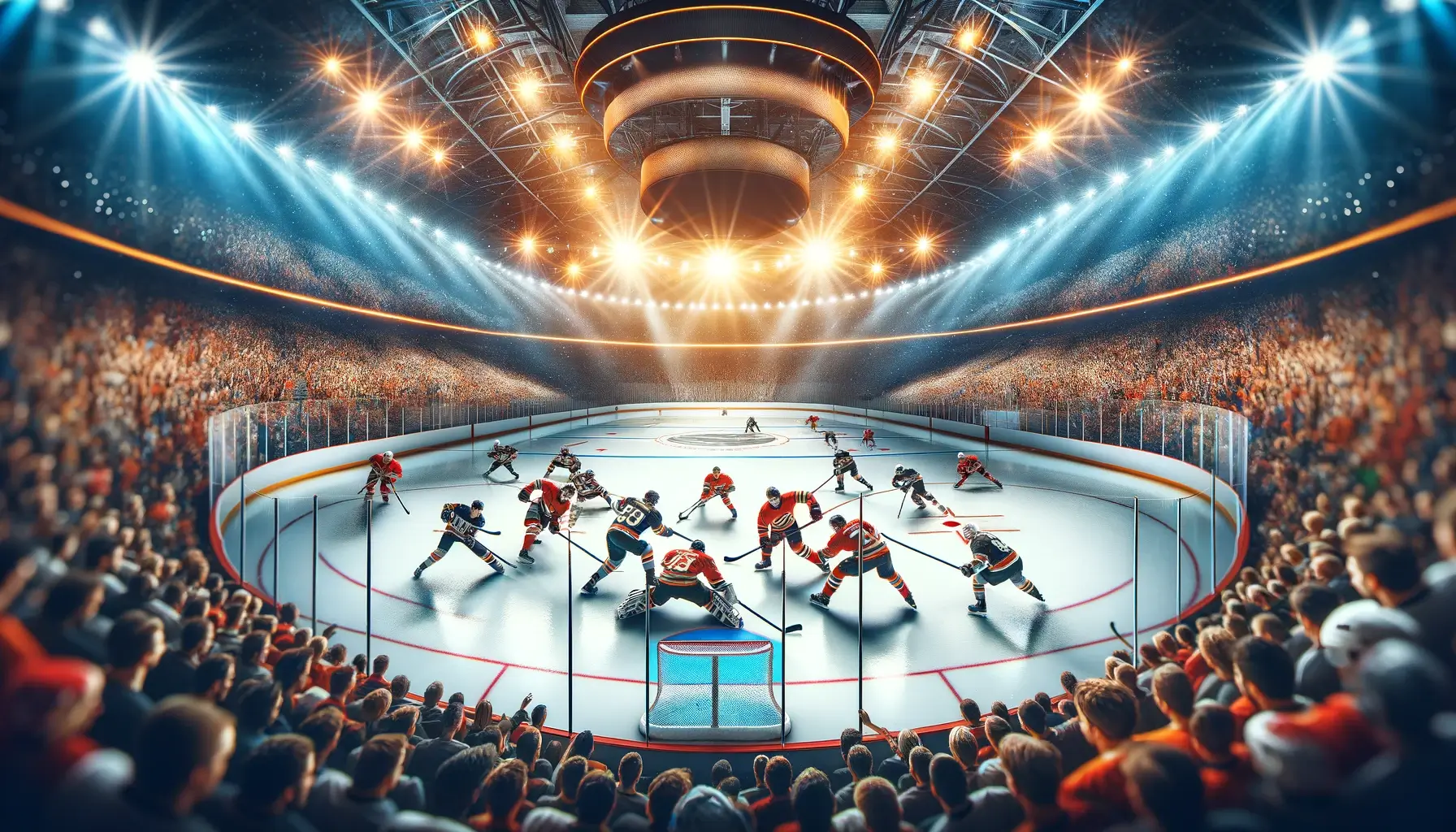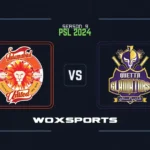How Many Periods In Hockey Game: Hockey is known for being an intense, fast-paced sport with players constantly in motion on the ice. But the action is broken up into multiple segments called periods. So how many periods are in a hockey game?
The standard for most professional and amateur hockey leagues is that games are played in three 20-minute-periods.
The periods are punctuated by 15-20 minute intermissions to allow players to rest and strategize before the next period of intense play. However, the game can go into additional overtime periods if it is tied at the end of regular time.
In this article, we’ll take an in-depth look at hockey periods – how many there are in different leagues, how long they last, what happens during intermissions, and how overtime periods work.
We’ll also explain some key differences you may see depending on the level of hockey being played. Let’s drop the puck and dive into the fascinating world of hockey periods!
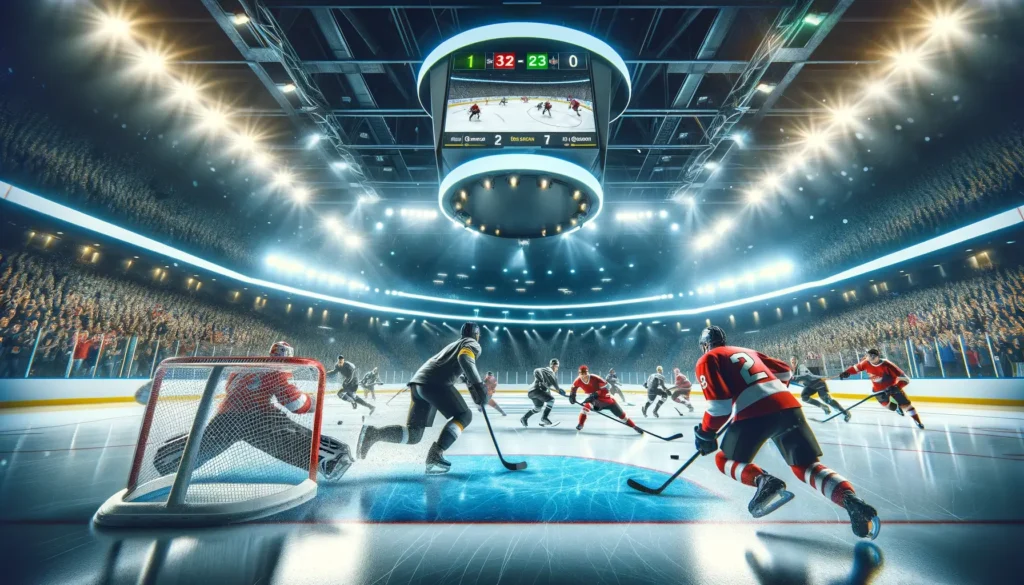
How Many Periods Are in an NHL Hockey Game?
The National Hockey League (NHL) is the highest level of professional ice hockey in the world. NHL games consist of three 20-minute-periods with a break in between periods.
Here is how the typical layout of an NHL hockey game looks:
- Period 1: 20 minutes of play
- Intermission: 18 minutes
- Period 2: 20 minutes of play
- Intermission: 18 minutes
- Period 3: 20 minutes of play
If the score is tied at the end of the 3rd period, a 5-minute overtime period is played followed by a shootout if still tied. More on overtime formats later.
So in total, a standard NHL hockey game contains three normal periods lasting 20 minutes each. The entire game with intermissions will usually run approximately 2.5 hours.
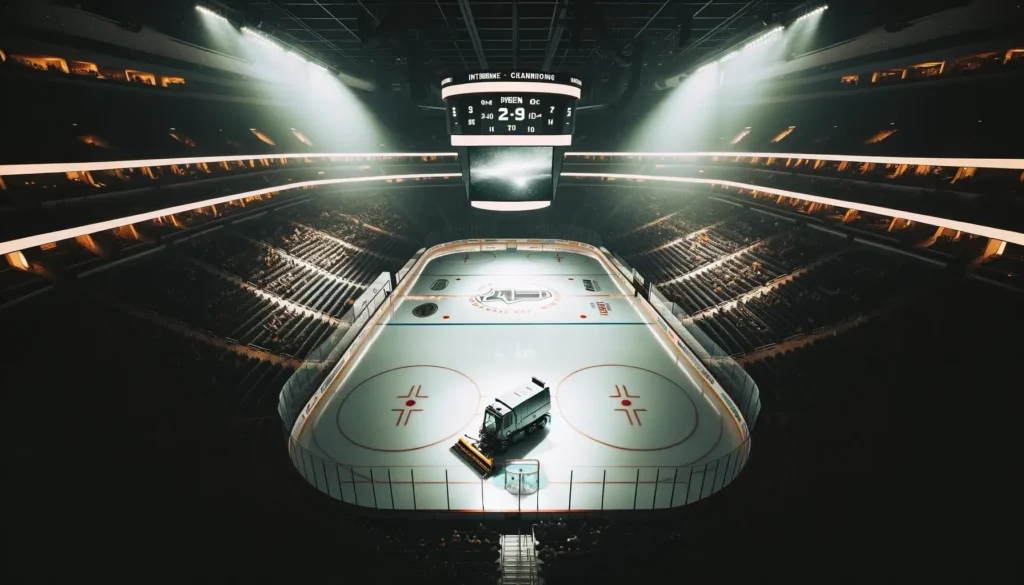
Why Are There 3 Periods in Hockey?
Hockey is one of the few major sports played in multiple periods, along with sports like boxing and mixed martial arts fights divided into rounds. So why is hockey structured this way with three periods instead of four quarters like in basketball or football?
The three-period format has been used since the origins of organized hockey in the late 1800s. Back then, early indoor hockey games were played in two 30-minute halves.
When the National Hockey Association formed in 1910, games were switched to three 20-minute periods to allow for more rest in between the fast-paced action.
This format stuck as it provided a nice balance, allowing players to recharge while still maintaining excitement through a sufficient length of uninterrupted play. The three periods also work well for resurfacing the ice during intermissions.
So in summary, the three periods allow enough rest periods for players while still providing longer segments of continuous play compared to sports with shorter quarters.
How Many Periods in Other Levels of Hockey
While three periods is standard in the NHL, other leagues sometimes use slightly different period formats:
- Minor league hockey (AHL, ECHL): Three 20-minute-periods
- College hockey (NCAA): Three 20-minutes periods
- Junior hockey (CHL, USHL): Three 20-minutes periods
- High school hockey: Three 15-17 minute periods or two 30-minute halves
- Women’s hockey: Two 15-20 minute periods
- Youth/children’s hockey: Three 12-15 minute periods
So minor league, college, junior, and high school hockey all follow the same three period NHL format but sometimes with shorter periods for younger players. Women’s hockey opts for two longer periods instead. Period lengths get increasingly shorter for children’s leagues.
But the key takeaway is that some variation of either two or three periods is standard across almost all levels of organized hockey.
What Happens During Intermissions Between Periods?
The intermissions between periods give both teams a chance to rest, hydrate, strategize, and make any lineup adjustments before the next period of play.
Here’s a look at what happens for players and coaches during a typical NHL intermission:
- Rest and recharge – Players will rest their legs and catch their breath after a period of intense skating. They rehydrate to replenish fluids.
- Medical evaluation – Team trainers assess and treat any player injuries sustained during the period.
- Discuss adjustments – The coach outlines any strategic or lineup adjustments needed for the next period.
- Review video – Coaches and players may review video clips of game play to analyze strengths/weaknesses.
- Psych up – Teams use the break to re-energize and mentally prepare for the next period of competition.
- Ice resurfacing – Arena crew resurfaces the ice, removing scrapes and snow buildup.
Intermissions last around 18 minutes in the NHL which gives players enough time for all the above. Youth hockey may have slightly shorter intermission times.
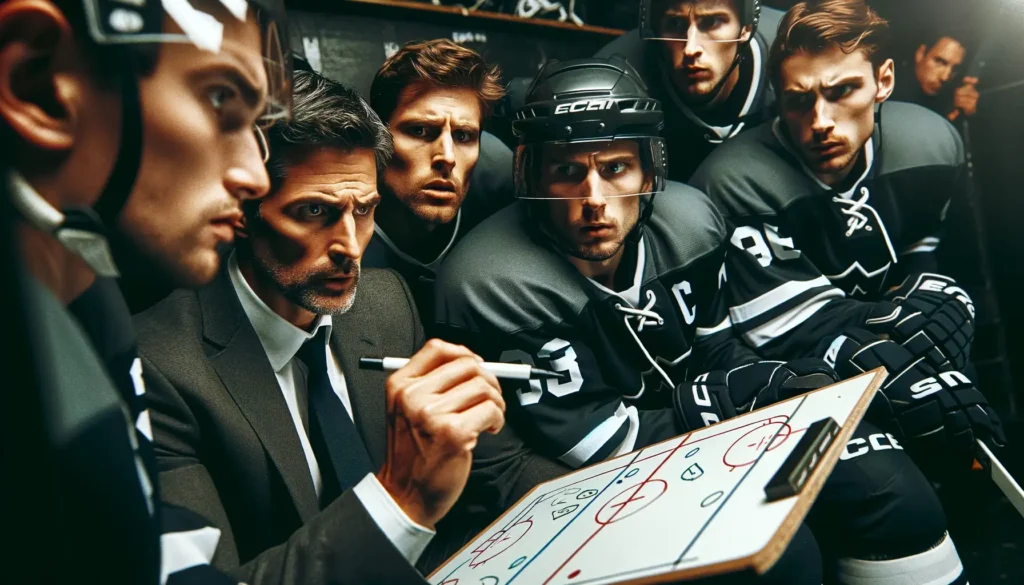
List of hockey games with the most Overtime Periods played
| Date | Home Team | Opponent | Score | Total Length | Overtime Periods | |
|---|---|---|---|---|---|---|
| 1 | March 24, 1936 | Montreal Maroons | Detroit Red Wings | 0-1 | 176:30 | 6 |
| 2 | April 3, 1933 | Toronto Maple Leafs | Boston Bruins | 1-0 | 164:46 | 6 |
| 3 | May 4, 2000 | Pittsburgh Penguins | Philadelphia Flyers | 1-2 | 152:01 | 5 |
| 4 | August 11, 2020 | Tampa Bay Lightning | Columbus Blue Jackets | 3-2 | 150:27 | 5 |
| 5 | April 24, 2003 | Dallas Stars | Anaheim Mighty Ducks | 3-4 | 140:48 | 5 |
| 6 | May 18, 2023 | Carolina Hurricanes | Florida Panthers | 2-3 | 139:47 | 4 |
| 7 | April 24, 1996 | Washington Capitals | Pittsburgh Penguins | 2-3 | 139:15 | 4 |
| 8 | April 11, 2007 | Vancouver Canucks | Dallas Stars | 5-4 | 138:06 | 4 |
| 9 | March 23, 1943 | Detroit Red Wings | Toronto Maple Leafs | 2-3 | 130:18 | 4 |
| 10 | May 4, 2008 | Dallas Stars | San Jose Sharks | 2-1 | 129:03 | 4 |
| 11 | March 28, 1930 | Montreal Canadiens | New York Rangers | 2-1 | 128:52 | 4 |
| 12 | April 18, 1987 | Washington Capitals | New York Islanders | 2-3 | 128:47 | 4 |
| 13 | April 27, 1997 | Buffalo Sabres | New Jersey Devils | 1-0 | 125:43 | 4 |
| 14 | March 27, 1951 | Detroit Red Wings | Montreal Canadiens | 2-3 | 121:09 | 4 |
| 15 | March 27, 1938 | New York Rangers | New York Americans | 2-3 | 120:40 | 4 |
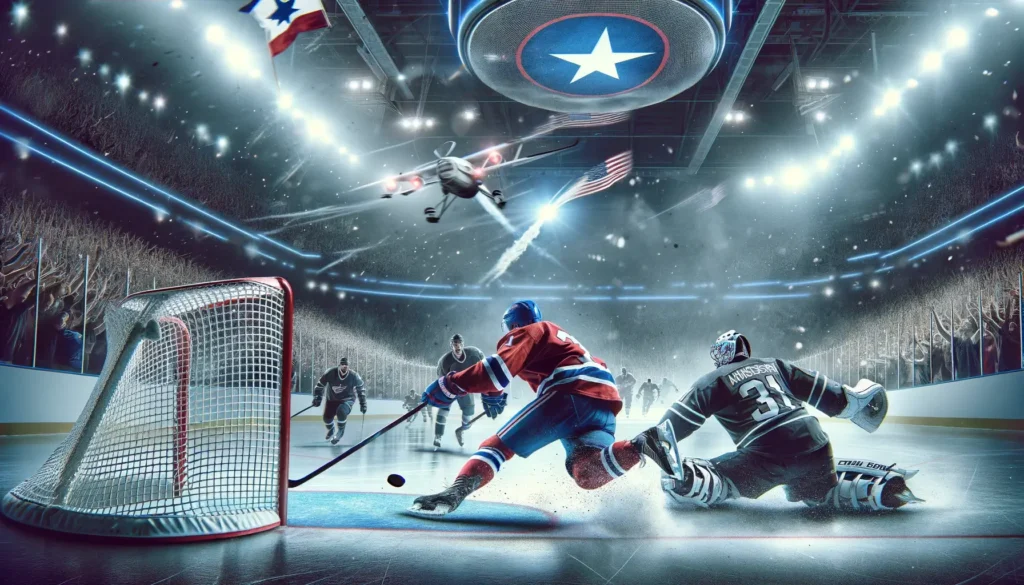
Do Women’s Hockey Games Also Have Three Periods?
Absolutely. In contrast to certain sports where game duration can vary based on gender, such as college basketball, hockey maintains a uniform structure for both men’s and women’s matches.
This means that women’s hockey games, just like men’s, are divided into three periods, upholding consistency in the game’s format across genders.”
How Do Overtime & Shootouts Work in Hockey?
If the score is tied at the end of the 3rd period, NHL games go into a 5-minute, 3-on-3 sudden death overtime period. The first team to score wins the game. This overtime is highly entertaining with so much open ice for 3 skaters per side.
If there is no score after the 5-minute overtime, a shootout consisting of 3 rounds will determine the winner. In a shootout, players go one-on-one against the goalie to see who can score. After three rounds, the team with more goals wins.
For playoff games, additional 20-minute 5-on-5 overtime periods are played as needed until a goal is scored. This keeps going until there is a winner. No shootouts are used in the playoffs.
The use of overtime periods makes it so hockey games don’t end in a tie, unlike some other sports. It provides an exciting conclusion to hotly contested matches!
A Few Key Things That Can Impact Period Length
While 20 minutes is the standard length per period in the NHL and most leagues, there are a few key things that can sometimes alter the actual time:
- Television timeouts – Broadcast TV games have scheduled 2-minute commercial breaks inserted, slightly extending period length.
- Icing calls – When icing is called, the ensuing faceoff takes extra time off the clock.
- Injuries – If an injured player requires attention on the ice, the clock is stopped.
- Penalties – Penalty clocks pausing game time while power plays occur.
- Challenges – Coaches challenges put the game on hold during video reviews.
So don’t be surprised if actual period length ends up being a bit more than 20 minutes on the game clock!
Why Don’t Periods Last Longer Than 20 Minutes?
Since hockey is such a high intensity sport, you may wonder why each period lasts only 20 minutes. Why not play 30 or 40 minute periods like in some other sports?
There are a few key reasons why 20-minute hockey periods help produce better quality play:
- Allows players to maintain maximum energy and intensity in short bursts.
- Provides adequate rest between periods to recharge.
- Prevents fatigue leading to decreased speed, sharpness, and injury risk later in games.
- Allows coaches to make strategic adjustments between periods.
- Provides a good pace of play for spectator enjoyment.
So while 20 minutes may seem short, that length offers the ideal balance for player performance. Regulation NHL periods have stayed right around 20 minutes for over 100 years for good reason!
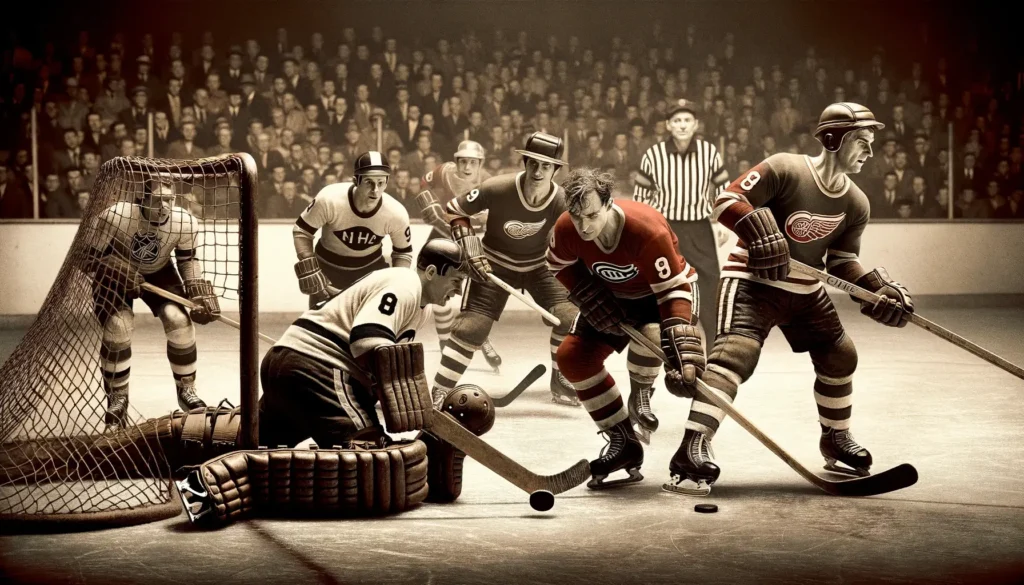
Conclusion – How Many Periods In Hockey?
In conclusion,during the regular season, if the game is tied at the end of regulation, a sudden-death overtime period is played. This overtime period is 5 minutes long. Unlike in the regular 20 minute periods, overtime is sudden-death, meaning the first team to score wins the game.
If neither team scores during the 5-minute overtime, the game ends in a tie.Overall, the use of standard 20 minute regulation periods along with overtime helps maximize both player performance and spectator enjoyment throughout NHL regular season games.
FAQs – How Many Periods In Hockey Game
Q: Which league has unlimited overtime in the playoffs?
A: The NHL playoffs feature unlimited 20-minute overtime periods until there is a winner.
Q: What is the longest an NHL playoff game can potentially last?
A: NHL playoff games can last indefinitely as overtime periods continue until a goal is scored.
Q: What penalties may result in game misconducts in the NHL?
A: Serious infractions like fighting or intent to injure can result in NHL game misconducts.

Mark Wilson is a sports writer who loves to share stories about different sports like baseball and soccer. He grew up in Chicago, USA, and always enjoyed watching and playing sports.

